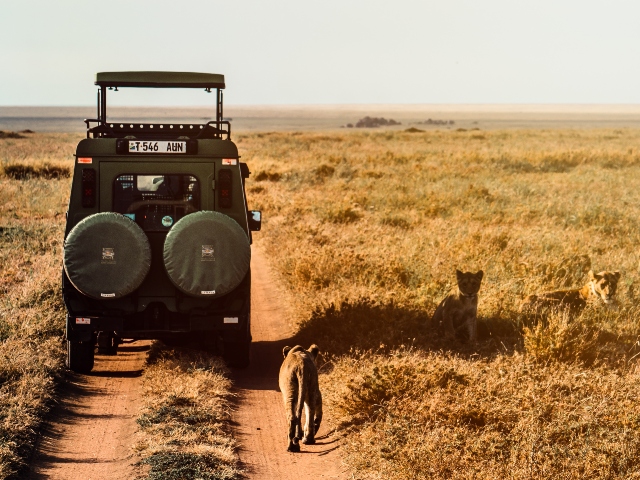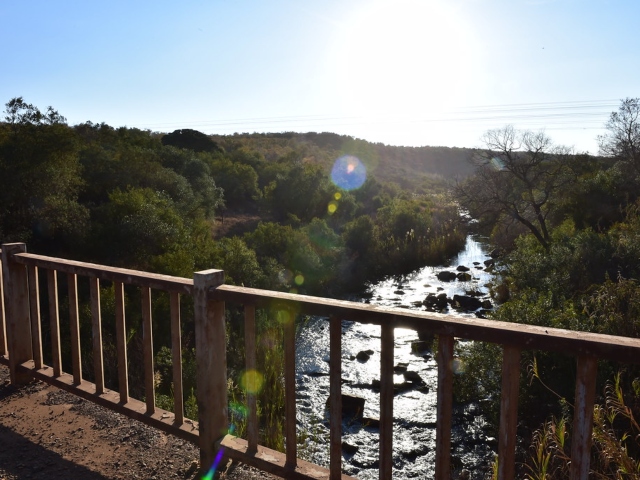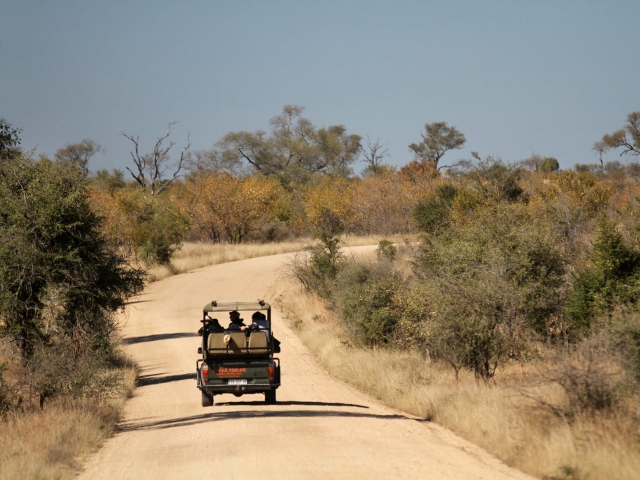
-
Alex De Bruin Escapes The Rat Race In The Madikwe Private Game Conservancy
18 Oct 2023 by Alex de Bruin in Lifestyle, South Africa, Vibe
[imagesource:flickr]
I grew up reading Herman Charles Bosman stories. The Groot Marico of my imagination is a dusty place dotted with Withaak trees, locked in the 1920s and occupied by sarcastic Boers who teased each other over coffee or peach brandy.
I had never had a reason to visit this north-western corner of South Africa until I invited myself (and my family) to a friend’s house at Bokplaats in the Madikwe Private Game Conservancy.
I have been working recently on innovative schemes in a last-minute rush to rescue nature from centuries of human greed. A rudimentary understanding of the human perils which we currently face because of our decreasing biodiversity compels me to spend more time in nature while it still exists. Children should be in the wilds as much as possible – far from screens, shopping malls and manipulative tweens – learning ancient lore about antlions and chameleons rather than slime and whatever is trending on Youtube.
October is a good time to be in the Bushveld. It isn’t too hot yet and sighting game should theoretically be better before the rain arrives after the dry winter months. I had also reasoned that the sapping heat would dab warm blotting paper over the chilly deluge we have endured this Cape winter. Also, gin tastes better after a dusty game drive while the red sun sinks beneath the horizon.
I like building up the logs in the firepit after sundown and staring into the flames or up at the stars which are always clearer in the bush. Madikwe is reasonably accessible from Cape Town. We flew into Lanseria which felt like halfway there. The flights are also affordable which is more than you can say about Cape Town to anywhere near Kruger which are priced for pale and minted hard currency passengers from the north who safari in khaki luxury and without children.
We travelled with some other families who are seasoned Madikwe-ites and the process was seamless and considered. We collected the pre-ordered meat and groceries from Broederstroom and then spent an agreeable amount of time pondering our wine selection from a broad range – Gone are the days where the choice beyond the major metropoles was limited to Tassies and Graca as the strawberry and vanilla options.
I was reminded of Oom Schalk Lourens when a local bywoner staggered into the bottle shop under two cases of quart empties. He had been working hard on his bar tan. His face was the colour of cheap tomato sauce and he was so thin I almost offered to buy him a half loaf of bread until I realized there was a conceivable risk that he may use it to sieve the dye out of a bottle of methylated spirits.
His reek was an unimaginable combination of faeces, sweat and metabolized booze. He didn’t bother with shoes. He was considerably taller than his hominem ancestor at the Malapa cave down the road, although I doubt even Darwin could present a compelling argument that he was more evolved.
He swapped the empties for a single quart and a nip of vodka. Shaky hands ripped the lid from the vodka and then shovelled it down his throat in a desperate, gargling rush. The beer chased it shortly afterwards. The entire quart. And then he burped loudly and grinned to himself with the satisfaction of knowing that at least the next couple of hours were taken care of.
The contents of our trolley suddenly appeared less appealing, and I replaced some of the gin with sparkling water.
The drive to Madikwe from Lanseria is interesting on at least three levels: anthropically, geologically, and historically. Initially, you pass the wedding venue belt where the Jobergers who haven’t heard of the KZN Midlands choose to marry. Then you wind through a tranche of country hotels that hide between rocky koppies, where many of those married couples conduct their extra-marital activities once young love has lost its luster.
Once your mind has digested this disturbing juxtaposition, you pass the Hartbeespoort Dam, which is rapidly being enveloped by hyacinth, an unfortunate metaphor best not dwell on unless one is in possession of powerful anti-depressants.
Next is Bafokeng country. The resourceful people were prescient enough to buy mineral-rich land while it was still legal for black people to do so. When Apartheid outlawed black land ownership, they transferred the land to the Catholic Church on the understanding that it would be returned when sense prevailed.
The Church honoured their promise in the nineties and the resources companies who had been mining the land were sued for back-dated royalties. This provided the Bafokeng with plenty of capital to benefit from economic empowerment when that became a thing.
One village is indistinguishable from the next as the road is lined with semi-rural dwellings interspersed with spaza shops, hairdressers and shisa-nyamas. Potholes pockmark the road although they don’t yet permeate. The houses are built mostly from bricks and occasionally a newly tiled roof or some Roman pillars illustrate that mining profits are being shared around to some degree.
Marikana is naturally distinguishable – from history rather than by any clues from road signs. One gets the sense the authorities don’t want to remind us of what happened there. Mine dumps interrupt the natural horizon with geometrical shapes.
Once we had passed Sun City and aimed for the Botswana border our surroundings grew hotter and the bushveld had taken on a grey khaki look. Sickle bush is interspersed with typical bushveld trees which look to be more successful at accessing groundwater like knob thorns and marulas.
The red earth shows frequently through the grass here. We arrived at our digs after a drive past pleasant grasslands stocked with plentiful plains game. Sable and roan antelope lounged in the shade, impala chewed calmly, and warthogs darted about with their tails up.
They all seemed unnaturally relaxed – like corporate employees when the boss has taken the day off. This was the section of the farm devoid of the Big Five. Elephants are banned because they destroy the trees and lions because they devour company assets like a rogue trader at an investment bank.
Two large male lions had arrived at our camp before us. They were snoozing beside the waterhole like a pair of middle-aged German tourists although they didn’t require sun loungers or the shade of one of Schalk Lourens’s Withaak’s. The dirt was good enough for them.
[image:wikimedia]
A crimson-breasted bush shrike tip-toed through the scrub behind them while a pair of bee eaters whose exact variety I was unable to catalogue perched on a branch in the background. Our camp was set in a fenced oasis watered by a pipeline from the Groot Marico River. The trees were alive with exotic birds of every variety, but we lacked an ornithological expert to identify all of them by sight or call.
It is a rare moment that – to miss the company of a polymath. But it seems to me that these brightly plumed male birds have ignored the African imperative to camouflage themselves into their habitat to hide from predators. As usual, this sort of decision is made in the trousers, to attract a mate – like a Joburger driving a red Ferrari and then wondering why he gets followed home by an opportunist.
View this post on InstagramOur billets were comfortable without being flashy. Quality beds, crisp linen, a herd of mountain bikes and all the amenities without it being adorned with Imperial-era nineteenth-century safari apparel to resemble Denys Finch-Hatton’s base camp.
There was a pool to entertain the kids, a thatched boma which caught the afternoon breeze and a waterhole within spitting distance to water the elephants, rhinos, lions and buffalo along with a plethora of plains game. It was difficult to choose between eyeing up the white-throated kingfisher in the Ficus above or the three-twirler kudu male cautiously bending down for a draught of water.
View this post on InstagramOur party were relaxed about game drives, and we only bothered to go on one a day. In the late afternoons when the sun had lost its bite. This suited us just fine. Our kids love the bush and are relatively well-behaved but endless time on a game vehicle pushes them to the edge. It also allowed for a daily lie-in, which is always nice, and some time to regroup after an evening around the firepit.
[image:pexels]
We were also not in a mad rush to tick all the obvious boxes and then put them on Instagram. Experiences are richer when not witnessed through the lens of a smartphone.
We made time for exercise and grunted through a couple of Pilates sessions. We walked and rode bikes through the non-Big five section. And then spent an afternoon sipping gin in a hide while watching hippos beside the Groot Marico River which reminded me of Kipling’s Great Grey green Greasy Limpopo as it eased past carrying a surprising amount of water given our surroundings.
The kids loved all of it. They splashed in the pool and then marvelled at the male lions dining on an ex-wildebeest with fascination and then rooted for the jackal when it stole a stray leg. They put on a concert and played old-fashioned games that didn’t require technology. What a privilege for all of us to do this while we still can.
[image:flickr]
If you haven’t been to the bush for a while, do it as soon as you can. This is our country’s most precious resource, and you can go to Disneyland anytime. And no-one really cares how much your overseas holiday cost anyway. We were driving home when a leopard stepped onto the road – to complete the set and wish us on our way.
Like the Terminator, we will be back.
Latest News
-
Game, Seth, Match – Goodbye 2024
Hey Guys - thought I’d just give a quick reach-around and say a big thank you to our rea...
-
Breakfast Of Champions: Hollywoodbets Kenilworth Racecourse Breakfast Gallops Is Back!
[imagesource:CapeRacing] For a unique breakfast experience combining the thrill of hors...
-
Need NYE Plans? Cafe Caprice’s Night Of Enchantment Masquerade Party Could Do The Trick
[imagesource:howler] If you're still stumped about what to do to ring in the new year -...
-
Buckingham Palace Steps In After Staff Christmas Party Spirals Out Of Control
[imagesource:maxandeli/facebook] It's not just in corporate that staff parties get a li...
-
Designer Babies Are Running Into Trouble As Teens, Grappling With Being ‘Experiments’
[imagesource:here] Imagine being born with the weight of your parents’ version of per...
-






























